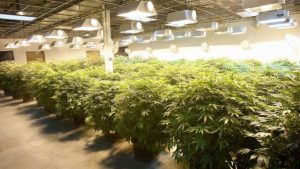Grow lights are certainly very important and they play a very important role in indoor gardening or indoor cannabis growing. In today’s world, we are fully aware of the technological advancements and developments in everything that we are using now. All these advancements, of course, include these grow lights. This post will be about not just any grow light. This will be focusing mainly on LEC grow lights, what it is, and what it can do for you to produce better cannabis yield. Pros and cons of using LEC grow lights will also be discussed.
Best Six LEC grow lights
Table of Contents
%CODE0209%
Sun System LEC 315W 120v Light Emitting Ceramic Metal Halide Fixture
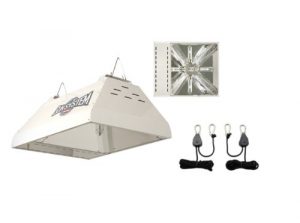 This is one of the best and well-loved LEC fixture by many cannabis growers. The kit comes complete with a built-in Phillips LEC ballast and a 3100K LEC bulb, the 4200K bulb is optional. The Sun System LEC 315 is ready to use and work with right out of the package. This LEC light boasts a 20,000-hour bulb life and 50,000-hour ballast life that ensures long-term performance. It provides 33,000 lumens from the time you power it up and maintains 85% of that output throughout the bulb’s lifetime. Because of its superior performance, this grow light tends to be a bit pricey too. However, if you are a grower who can easily afford this, we tell you, it’s totally worth every penny. You’ll never have a hard time setting this up since the kit has everything you need in a grow light, so you can just plug it and start.
This is one of the best and well-loved LEC fixture by many cannabis growers. The kit comes complete with a built-in Phillips LEC ballast and a 3100K LEC bulb, the 4200K bulb is optional. The Sun System LEC 315 is ready to use and work with right out of the package. This LEC light boasts a 20,000-hour bulb life and 50,000-hour ballast life that ensures long-term performance. It provides 33,000 lumens from the time you power it up and maintains 85% of that output throughout the bulb’s lifetime. Because of its superior performance, this grow light tends to be a bit pricey too. However, if you are a grower who can easily afford this, we tell you, it’s totally worth every penny. You’ll never have a hard time setting this up since the kit has everything you need in a grow light, so you can just plug it and start.
More to love:
You get an all-in-one construction hood reflector, which means it contains the ballast needed to power the lamp. This fixture is also a lot more compact compared to its counterparts. The vertical arrangement of the bulbs is also a good way to produce an even spread of light onto the cannabis plants. The material inside of the hood is 98% reflective German aluminum with 95% reflective textured corners. This design ensures the promotion of optimal output and uniformity. This grow light gives you a 4 x 4 feet area of coverage. Many users also appreciate the free ratchet hangers included in the package. Overall, the Sun System LEC 351 is a great fixture and grow light for your cannabis’ needs.
Protopia Grow Light Bulb Lights Ceramic Metal Halide Growing Lights
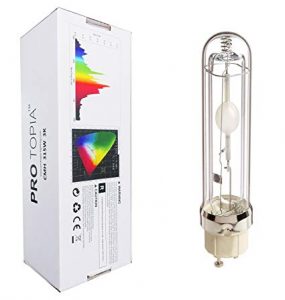 This LEC grow light by Protopia is a good choice for those growers who are on a budget. If you think that the cheap bulbs never work well, consider the Protopia 315W 3100K as an exception. When it comes to light output, this bulb is very comparable to the Philips. It initially has an output of 37000 lumens. However, the Protopia lights deteriorate more quickly compared to the Philips one and other more expensive LEC lights. Given its very affordable price, this LEC grow light has a very impressive efficiency. This LEC light also has a shorter lifespan. But given that it has a very low price point, this LEC light is definitely worth considering.
This LEC grow light by Protopia is a good choice for those growers who are on a budget. If you think that the cheap bulbs never work well, consider the Protopia 315W 3100K as an exception. When it comes to light output, this bulb is very comparable to the Philips. It initially has an output of 37000 lumens. However, the Protopia lights deteriorate more quickly compared to the Philips one and other more expensive LEC lights. Given its very affordable price, this LEC grow light has a very impressive efficiency. This LEC light also has a shorter lifespan. But given that it has a very low price point, this LEC light is definitely worth considering.
More to love:
Cannabis growers love how this LEC grow light has a very affordable price. It costs considerably less than most great and efficient LEC grow lights. We also appreciate how the Protopia has a remarkably huge output. This LEC light is also far more superior than the lights in the same price range.
Philips Master 3100K GreenPower Elite Agro LEC Lamp
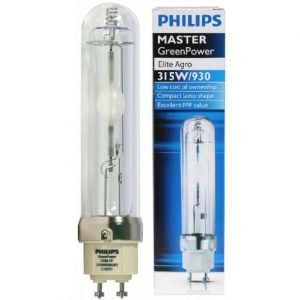 The Philips Master light is a very popular and well-known bulb when it comes to LEC category. And we agree that this LEC light deserves all the hype and admiration. This gives you up to 33,000 lumens of output. That is indeed an incredible output for a bulb that only uses 315 watts. Other than that, the Philips Master 3100k also retains 90% of that output after 8000 hours of use. Philips uses a unique open rated lamp construction which is able to reduce radiant heat from the arc tube. They also create their bulbs to be perfect for open fixtures. Simply, they give off lesser heat than comparable HPS and MH bulbs, greatly reducing the need to cool your grow space.
The Philips Master light is a very popular and well-known bulb when it comes to LEC category. And we agree that this LEC light deserves all the hype and admiration. This gives you up to 33,000 lumens of output. That is indeed an incredible output for a bulb that only uses 315 watts. Other than that, the Philips Master 3100k also retains 90% of that output after 8000 hours of use. Philips uses a unique open rated lamp construction which is able to reduce radiant heat from the arc tube. They also create their bulbs to be perfect for open fixtures. Simply, they give off lesser heat than comparable HPS and MH bulbs, greatly reducing the need to cool your grow space.
More to love:
Many cannabis growers claim that this 3100K color spectrum of the Philips Master works perfectly for all stages of growth. It does a pretty remarkable job not only during the flowering stage but also in the vegging stage too. Its huge output and a longer lifespan are also very much appreciated by its users. This LEC grow light also boasts its low heat output and it does not need to be ventilated too. Although this one has a bit higher price point, we assure you, it is totally worth it.
Grow Co. 315W Ceramic Metal Halide CMH System
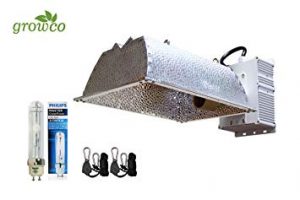 The Grow Co Ceramic Metal Halide Lighting System is one of the affordable and low-cost LEC kit in the market. It generally costs slightly more than half compared to the Sun System kit while including similar components. However, there may be a notable difference when it comes to quality. The most noticeable difference between the two is the external ballast. Sun System has the ballast attached inside the reflector, but the Grow Co kit has an external ballast. This makes the fixture bulkier and that can be a big issue or concern for some. The bulb included with the Grow Co system is the same Philips bulb in the Sun System kit. When it comes to the reflector, it is known to be made from high-reflective hammer tone aluminum, but the manufacturer does not provide a specific information regarding the percentage of reflectivity.
The Grow Co Ceramic Metal Halide Lighting System is one of the affordable and low-cost LEC kit in the market. It generally costs slightly more than half compared to the Sun System kit while including similar components. However, there may be a notable difference when it comes to quality. The most noticeable difference between the two is the external ballast. Sun System has the ballast attached inside the reflector, but the Grow Co kit has an external ballast. This makes the fixture bulkier and that can be a big issue or concern for some. The bulb included with the Grow Co system is the same Philips bulb in the Sun System kit. When it comes to the reflector, it is known to be made from high-reflective hammer tone aluminum, but the manufacturer does not provide a specific information regarding the percentage of reflectivity.
More to love:
We love how the Grow Co may work as a dupe or a cheaper alternative for the Sun System LEC kit. This LEC grow light also boasts a 630W option, you can easily double the power with a dual-bulb reflector. Growers also love how the components included in the Grow Co kit are similar, but cheaper version, to the ones in the Sun System.
Hydro Crunch 315-Watt Ceramic Metal Halide Grow Light System
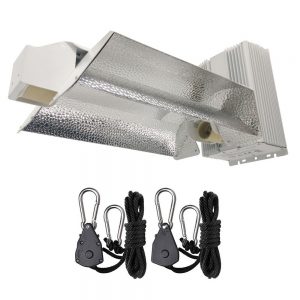 Hydro Crunch 315-Watt CMH Ceramic Metal Halide System is an all-inclusive grow light fixture. It comes with a high output and energy efficient system. The Hydro Crunch features a built-in digital ballast specifically designed to run the 315W ceramic lamp. This system operates in a horizontal position. The Hydro Crunch 315-Watt Ceramic Discharge Metal Halide Grow Light System delivers a light spectrum that’s much closer to natural sunlight than typical HID systems. The reflector’s interior is European highly reflective aluminum and offers excellent uniformity and diffusion. This LEC grow light is also easy to mount and use.
Hydro Crunch 315-Watt CMH Ceramic Metal Halide System is an all-inclusive grow light fixture. It comes with a high output and energy efficient system. The Hydro Crunch features a built-in digital ballast specifically designed to run the 315W ceramic lamp. This system operates in a horizontal position. The Hydro Crunch 315-Watt Ceramic Discharge Metal Halide Grow Light System delivers a light spectrum that’s much closer to natural sunlight than typical HID systems. The reflector’s interior is European highly reflective aluminum and offers excellent uniformity and diffusion. This LEC grow light is also easy to mount and use.
More to love:
Most growers love how this LEC grow light has easy mounting options. It comes complete with a ballast and highly reflective reflector. Hydro Crunch also has a power-coated exterior for durability and strength with a remarkably long lifespan. Coverage area is 4 ft. x 4 ft., that means bigger harvest and less cost. The Hydro Crunch is optimized for the bloom phase with enhanced reds, but because of its full-spectrum light, it will produce the good in both veg and flower expect to see increased growth rates.
TopoLite CMH LEC Grow Light
The TopoLite CMH LEC Grow Light helps provide light to a 4×4-foot area. It uses 630W and is constructed out of a durable aluminum housing. This housing is durable and will last you for many years. In addition to this, it’s works to hold heat. This way, it won’t escape and will instead be sent down to your plants. The TopoLite CMH LEC Grow Light has a full spectrum so it can help with all growth stages. To assist with this, it contains a square wave ballast. This will ensure that all areas around your plants receive enough heat and light.
You can use this LEC grow light safely in hydroponic systems. To secure it above your plants, it comes with a rope hanger. You can secure the clips on the end of the hanger to the small rings on the top of the grow light.
Related: these nutrients were specifically designed to compliment your hydroponic marijuana growth systems
Built into this product is short circuit protection, open circuit protection, and heat protection. This will help prevent fires and overheating.

LEC Grow Lights
So if you are wondering what LEC grow lights are, we’ve got the answer for you! These LEC or Light Emitting Ceramic (LEC) grow lights also go by the names Ceramic Metal Halide (CMH) or Ceramic Discharge Metal Halide (CDM). We understand that too many terms might confuse you, but don’t worry all terms generally have the same definition. Also, as technological advancement and awareness increase, all of these terms and names can be used interchangeably. But if you are still somewhat confused, here are specified definitions to help you clear things up.
Definition of terms
- Light Emitting Ceramic grow light – the commonly used term “LEC” is a trademark or brand name for a model of grow light. It uses ceramic metal halide technology. Nowadays, the term “LEC” is frequently used interchangeably with the term Ceramic Metal Halide (CMH) since both of them are referring to similar principles and technology.
- Ceramic Metal Halide (CMH) – is basically a Metal Halide light that uses a ceramic arc tube.
- Ceramic Discharge Metal Halide (CDM) – Another common term for the same technology.
What are LEC grow lights
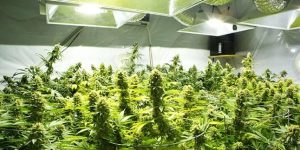 Light emitting ceramic (LEC) halide lights are a popular item in indoor gardening and cannabis growing applications. They are efficient in providing a wider spectrum of light compared to conventional fluorescent bulbs. This effectively results in stronger and healthier growth. They also effectively reduce energy costs at the same time. A distinct feature of these LEC lights is that it instead of using the quartz material used in Metal Halide lights, it uses a ceramic arc tube. It results in a light with a more natural color while producing more light or lumens per watt. This type of grow light also lasts longer than others. According to Royal Queen Seeds, the most common model of LEC light or fixture is the 315W with a 4200K color bulb, this one is a tough competition for the LED grow lights which is also a great all-around lighting solution.
Light emitting ceramic (LEC) halide lights are a popular item in indoor gardening and cannabis growing applications. They are efficient in providing a wider spectrum of light compared to conventional fluorescent bulbs. This effectively results in stronger and healthier growth. They also effectively reduce energy costs at the same time. A distinct feature of these LEC lights is that it instead of using the quartz material used in Metal Halide lights, it uses a ceramic arc tube. It results in a light with a more natural color while producing more light or lumens per watt. This type of grow light also lasts longer than others. According to Royal Queen Seeds, the most common model of LEC light or fixture is the 315W with a 4200K color bulb, this one is a tough competition for the LED grow lights which is also a great all-around lighting solution.
Advantages and Disadvantages
As mentioned above, LEC grow lights can effectively provide a full spectrum of your light for your cannabis. Although results may vary due to different factors, all have noted and claimed improved yields from indoor gardening with the use of LEC grow lights. Despite the great functionality and well-loved features, every component still has a share of disadvantages as well. Here are the advantages and disadvantages of LEC grow lights:
Advantages of LEC grow lights
Spectrum of light
The spectrum offered by LECs is also another advantage it can offer. LEC grow lights are able to give off and produce UVB rays. According to many experienced growers, this spectrum of light is effective in improving the trichome production of cannabis. The LEC spectrum is a combination of the blue MH spectrum and red HPS spectrum, this results in a light produced that is extremely similar to sunlight.
Related: these are our premium full spectrum LED grow lights
What is the MH Spectrum?
The MH (Metal Halide) spectrum is ideal for weed plants at all growth stages. It uses quite a bit of red and blue lights which encourage faster and healthier growth. Unlike many other weed grow lights, the MH spectrum conducts less heat. This way, you don’t have to worry about your plants getting burned. In addition to this, it shines more light on your plants which ensures they receive an adequate amount.
What is the HPS Spectrum?
The HPS (High Pressure Sodium) spectrum creates light in a unique way. When it sends an electric current through its wires, this current will also combine with xenon gas and sodium/mercury vapor gas. Because of this, it creates strong and powerful light beams to shine over your plants. Unlike the MH spectrum, the HPS spectrum emits mainly an orange or red hue.
Light color
It was mentioned above that this latest development of grow light produces light that is more natural-looking. This feature lets you view your cannabis in full and natural color. Because of this, you may be able to examine and easily notice any problems or growth issues that can be diagnosed through significant changes in color. The light produced by LECs will not distort the color of your cannabis as it comes out naturally compared to the yellowish tinge of the HPS lights and the purple hue from LED lights. LEC grow lights is not only helpful for viewing and inspecting your plants, it also lets you see them with its full vibrant colors. They are also less suspicious during events that your lights may spill out from the doors or windows.
UV Rays
It was mentioned above that UV light contributes to better trichome development in your cannabis. LECs contain UV lights of each type. UVC is harmful that is why it gets blocked by glass filters in the bulb only to let the UVA and UVB through. Both UVA and UVB bring benefits for better yield. When using LECS, you no longer need supplemental UV bulbs.
Longer lifespan
The lifespan of LEC lights is noted to be significantly longer than other grow light options besides LED. They do not only last longer but they also keep their brightness longer than regular lights. It is a good thing since the bulbs do not need to be replaced as much as often. LEC lights are said to last over 20,000 hours. But even after that, they are still able to retain 80% or more of their initial output. Many growers appreciate that these LECs do not quickly deteriorate. Because of this, if you need a durable light source that will last you for many years, a LEC grow light might be ideal to invest in.
Efficiency
LEC grow lights are very efficient in a way that they are able to produce a higher PAR output. PAR is the amount of light that will be used by your cannabis. They give you a higher PAR per watt than any other type of lighting, apart from the very expensive LED grow lights. This way, you’ll find that LEC grow lights will encourage your plants to grow quickly but without increasing your energy bill.
Lower temperature
LEC lights tend to be cooler than other their grow light counterparts like MH and HPS. However, LECs may be a bit warmer that great quality LEDs. Despite this, LEC lights are extremely energy-efficient. Because of this, they won’t overheat. This will prevent them from burning your plants and possible igniting.
Disadvantages of LEC grow lights
Potential Harm
UV rays produced by the LEC grow lights are harmful to us humans. It can pose risks and be harmful not only to the skin but also to your eyes. However, you can adequately protect yourself by using PPE or personal protective equipment. To avoid potential harm brought by UV rays, it should be your responsibility to protect yourselves or your growers.
You can keep your body safe in a few ways. One is by wearing protective clothing. If you need to work under the LEC grow lights for a long period of time, consider putting on some gloves. You might also want to wear a long-sleeved shirt. These will keep your skin safe from potential skim damage.
In addition to this, you might want to put on some sunglasses. This way, you can look closely at your plants without the LEC grow lights damaging them. While UV eye damage might not be evident at first, over time, it could lead to serious health concerns. These include blurred vision, headaches, and even blindness in some cases.
Higher cost
Many seasoned growers might be aware that LEC grow lights might be a bit pricey. They may be priced at around $500 for the smallest unit. With that price range, the cost twice as much as a comparable HPS/MH system. The setup cost of a LEC unit or kit is a bit at the top too. However, with this downside, there will also be something good about it. Yes, truly the initial cost is higher, but the long-term running costs will be affordable and cheap since LEC lights will not use too much energy and replacements will not be as frequent as other types of grow lights.
Heat output
The temperature was also included in the advantages since it has a lower temperature when compared to HPS or MH lights. Yet, this is warmer than the LED grow lights. This characteristic may also contribute to an additional cost since you should be able to guarantee sufficient cooling options and create a good airflow.
Vegging
LEC grow lights do a very great job during the flowering stage of your cannabis. This is because of their warmer color spectrum. However, they kind of lack some blue light in them that is why they are a bit off during the veg stage. But worry not since LEC grow lights still work fairly great for the whole growth cycle of your cannabis plants.
Ballast Compatibility
Those standard ballasts that you can buy from your local hardware is not compatible with your LEC lights. The common and standard ballasts can be used with other forms of HID lightings, but not with your LEcs, and that’s a bit sad. They can’t be used with your ceramic bulbs since they have very high frequencies. There are some high-end electronic ballasts that have the right microprocessors to power LEC bulbs, but the safest option is to use only ballasts specifically designed for your LEC systems. Because of this issue, you may need to just buy a complete LEC kit so start with. In that way, you won’t have to worry about the compatibility of your ballast at all.
Comparisons
Since LEC lights generally fall in between the traditional LEDs and HIDs, we will be giving you short comparisons of them below.
LEC vs. LED
Comparing LEC and LED lights might be a lot trickier than you think. If you are comparing LEC to high-quality LED grow lights, then all of the advantages LEC has over traditional HID bulbs are now disadvantages when compared to LED and vice versa. As mentioned above, LEC emits more heat and uses more energy compared to LED. On the other side, the initial cost is much lower. Those high-quality and great LED lights also have a light spectrum that is perfectly tailored for plant growth, easily beating even the sun-like LEC spectrum. When you compare LEC with cheaper LED lights, the decision is much easier to make. Now LEC bulbs are actually more expensive, though not by much. They also outperform the cheaper LEDs.
LEC vs. HPS
HPS bulbs have a light spectrum that is very loaded in orange and red light and almost without blue. This makes them ideal for flowering, but never great for vegging. Using an HPS bulb during vegging results in weak, spindly plants. LEC bulbs work greatly for flowering, too, but not as good at HPS. However, when it comes to vegging, they truly work much better, making them the perfect full-cycle bulbs. LEC grow lights are basically a bit more expensive than their HPS counterparts, but they make up for it with the longer lifespan. They also make use of less energy and emit less heat when compared to HPS.
LEC vs. MH
We are aware that ceramic discharge metal halide bulbs are derived from metal halide bulbs. However, they are very different and they are impossible to run in the same system. They need a different and specific ballast. Metal halide bulbs are slightly better at vegging than LEC bulbs, but the difference is minimal. The added red light is truly a benefit, even during vegging. As a result, the only notable advantage of MH bulbs is their lower cost and price point. They only have lesser lifespan than that of a ceramic metal halide bulb, so that easily makes up for the cost difference. LEC lights also use less power than MH and emit less heat. There is basically no reason to choose MH over LEC unless you are complete with the appropriate fixtures and ballasts.
Additional Information on LEC Grow Lights
Environmental Impact
- Eco-Friendly Technology: LEC grow lights are considered more eco-friendly compared to traditional HID (High-Intensity Discharge) lights. This is due to their longer lifespan, which means fewer replacements and less waste. Additionally, the materials used in LEC lights are often more recyclable.
- Energy Consumption: While LEC lights are efficient, it’s important to note their energy consumption in comparison to other eco-friendly options like LED. This aspect is crucial for growers who are also environmentally conscious.
Technological Advancements
- Smart Integration: With the rise of smart home technology, newer models of LEC lights may offer integration with home automation systems. This allows for remote control and monitoring of light schedules, intensity, and even spectrum adjustments, which can be especially beneficial for precise cultivation practices.
- Spectral Tuning: Some advanced LEC lights come with the ability to fine-tune the light spectrum. This feature can be particularly advantageous during different growth stages of cannabis, where varying light spectrums are required.
Health and Safety Considerations
- UV Ray Protection: While LEC lights have built-in glass filters to block harmful UVC rays, growers should still be cautious about prolonged exposure to UVB and UVA rays. Ensuring proper protective gear and limiting exposure can mitigate health risks.
- Heat Management: Despite their lower heat output compared to other lights, LECs still produce significant heat which needs to be managed in confined grow spaces to prevent heat stress on plants and maintain a controlled environment.
Economic Aspects
- Long-term Cost Savings: Although the initial investment in LEC lighting may be higher, the long-term savings due to their efficiency and longer lifespan should be emphasized. This is especially relevant for commercial growers where the scale of operation can magnify these savings.
- Maintenance and Replacement Costs: Highlight the lower frequency of bulb replacements and maintenance requirements for LEC lights. This not only saves on direct costs but also reduces the labor and time involved in maintenance.
Endnote
We hope that through this guide and review, we have helped you in more ways than one in learning more about LEC grow lights. Also, if you are planning to buy one, we hope this guide helped you decide on which one to get. Happy growing!

